Green Barcelona

Barcelona’s public parks and gardens bring city dwellers closer to nature and make the city more appealing, accessible, and sustainable. Together with the wide variety of trees planted along the streets, parks and gardens act as lungs for the whole city.
Barcelona has an extensive network of parks and gardens that has grown progressively since the major urban renovations of the late nineteenth and early twentieth centuries. Green spaces are essential for the city’s inhabitants, providing them with a rich variety of vegetation, excellent quality of life, and emotional well-being. Cities are increasingly promoting the natural environment in order to maintain a balanced and healthy ecosystem and guarantee a sustainable future; the good news is that in Barcelona we have what it takes to ensure this continues.
The large number of parks and gardens in the city that have been designed, built, or evolved naturally have brought ecological and socio-cultural benefits and biodiversity to the city. Beyond preserving health and emotional well-being, parks are aesthetically pleasing and encourage people to relate to each other. For some citizens, they are often the only way to get close to nature. Some of the challenges for those managing these oases include saving energy, promoting more sustainable mobility, and more efficient waste management.
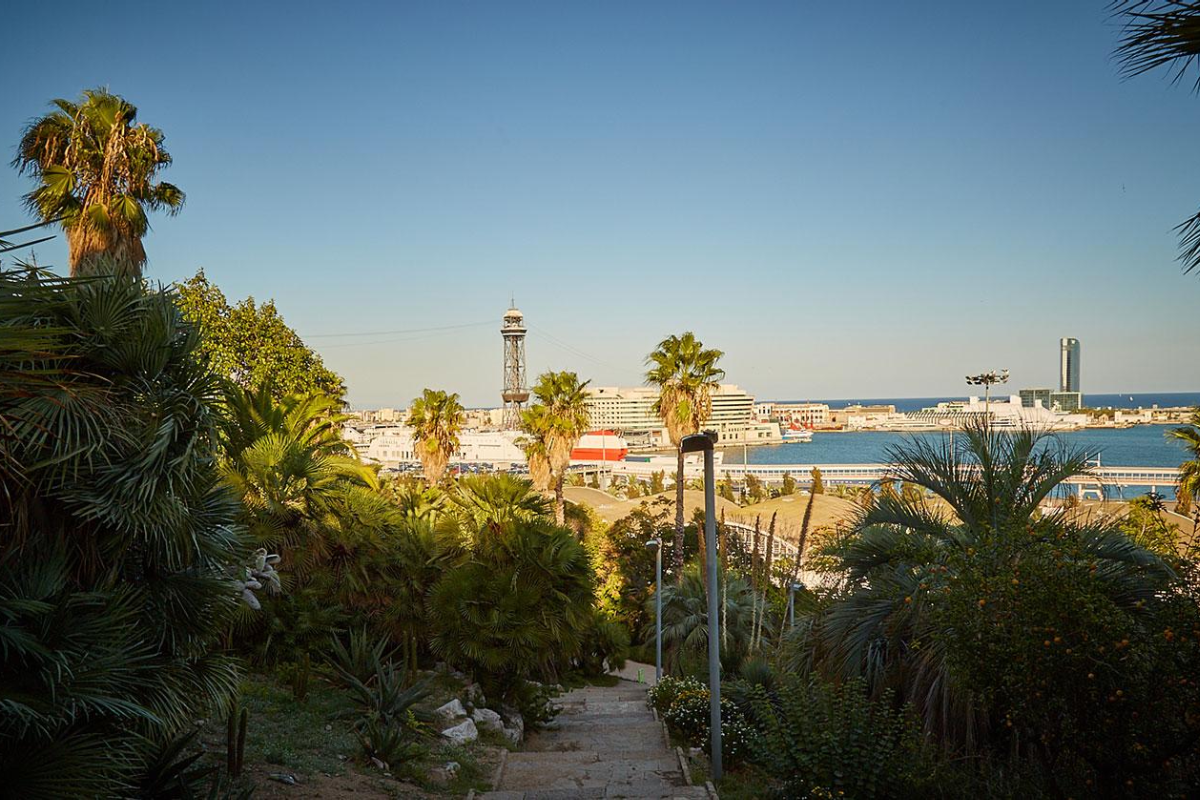
Parks and gardens have other important functions. They are places where one can meet up, spend one’s leisure time and relax; or go for walks, with or without a dog, and quietly enjoy a good book; or perhaps do a sport that helps one stay in shape and provides a break from the stresses of everyday life. It’s no surprise that Barcelona was ranked the fourth best city for sport, only behind New York, London and Los Angeles, by the prestigious communications agency Burson, Cohn & Wolfe (BWC). Among other things, the study rated the city's major sporting events, the variety and quality of its sports facilities, and the lifestyle of its population.
Although there are numerous parks and gardens that could be included in a list of recommendations, we will list the seven must-sees that reflect Barcelona’s firm commitment to remaining a green, sustainable city well into the future.
Ciutadella Park
Ciutadella Park was the first public park in Barcelona to be designed and built as a model park in the late nineteenth century. Both for its location in the center of the city and for its size it is a good place to pursue all kinds of recreational and cultural activities. It is easy to while away one’s time among the people walking, playing sports, playing an instrument, or simply enjoying an outing with family or friends. And it is also an ideal place for concerts, plays, fairs and all kinds of social gatherings that bring together people from all corners of the city.
Abounding with age-old trees, the park contains more than one hundred species of plants and numerous different features. These include intriguing sculptures, a rowing lake, a spectacular monumental waterfall, a bandstand, and several nineteenth century buildings that are now museums. Two of the most famous sculptures are the life-size stone mammoth set up by the Natural Science Committee in 1907 and The Lady with an Umbrella by Joan Roig Soler which sits atop an ornamental fountain designed by Josep Fontserè.
Starting this summer, the Ciutadella Park and the surrounding area is due to undergo a long-awaited transformation that will turn the area into a modern complex for innovation and scientific research dubbed La Ciutadella del Coneixement (The Ciutadella of Knowledge). The initiative is led by the Universitat Pompeu Fabra (UPF), the Spanish National Research Council (CSIC) and the Barcelona Institute of Science and Technology (BIST).
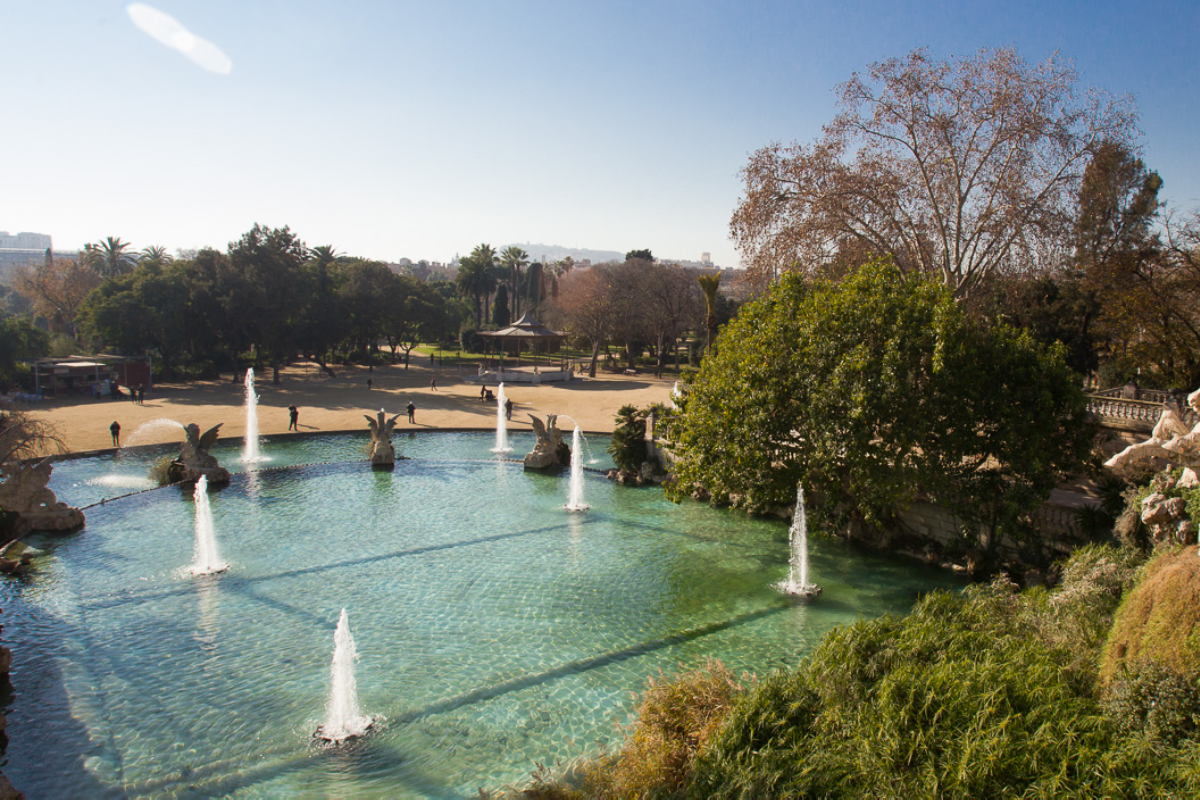
Park Güell
More than a park, the Park Guëll is one of the iconic works created by Antoni Gaudí, the leading representative of Catalan modernista architecture. A symbol of the city, it is unique. It was declared a historic-artistic monument of national interest in 1969 for its originality and enormous cultural value, and in 1984 it was declared a World Heritage Site by UNESCO. The park is currently managed by Barcelona de Serveis Municipals (B:SM), who are tasked with providing quality services and controlling the large numbers of visitors, facilitating free access to the site for local residents and schoolchildren, and ensuring maximum efficiency and effectiveness in order to ensure a sustainable environment.
Although the park is internationally recognized as a monument, it also offers endless possibilities as a public park, both for local residents and occasional visitors. An open space in the center of the park known as the Plaça de la Natura (Nature Square) is partially supported by the Sala de les Cent Columnes (Hall of One Hundred Columns), which is composed of eighty-six columns in the form of stalagmites. The square is reached via the famous staircase opposite the main entrance which is home to the famous salamander sculpture that has become an emblem of the garden. Blessed with luxuriant undergrowth, the park has the charm of a Mediterranean garden and is full of native trees and aromatic plants that offer peace and tranquility in the upper part of the city.
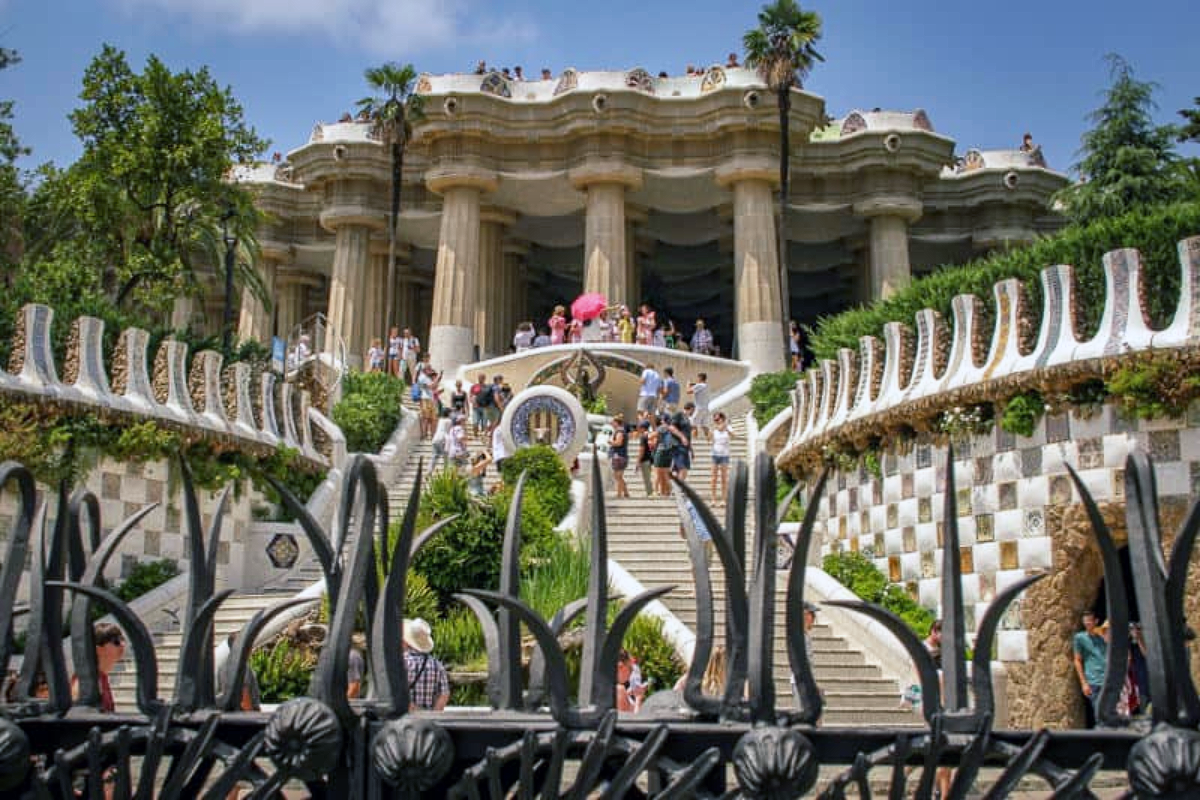
Collserola Parc
Barcelona has the extraordinary good fortune to have both a spectacular seafront and a vast natural park. The 8,000 hectare Collserola Park was declared a natural park in 2010 and has a great diversity of natural environments and landscapes, although Mediterranean forest predominates. To preserve and maintain the park is no easy feat, but it provides outstanding quality of life to the people of Barcelona who go there to get out of the city center and, above all, to go walking, running, and cycling. At 512 meters above sea level, the highest point is Tibidabo, a popular location for the magnificent panoramic views of the city and its popular amusement park.
The park extends across the entire northern limit of the city, situating Barcelona between two great natural borders: the Mediterranean Sea in the south and Collserola in the north. Nevertheless, a series of green corridors connects the park to the city and the sea. Because of its distance from the hustle and bustle of the city, the park has a great diversity of fauna, mostly Mediterranean, which is concentrated in forest areas but may well invade other spaces such as crops and meadows.
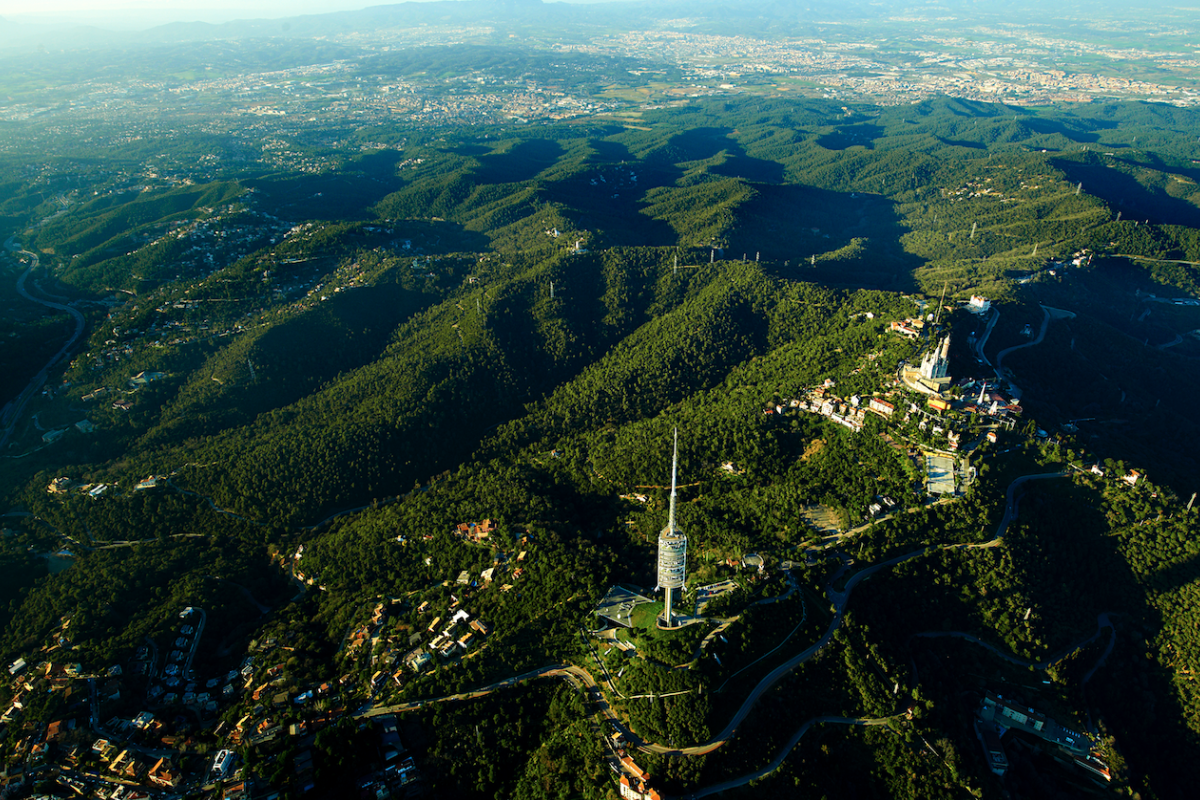
Montjuïc
The mountain of Montjuïc, in all its extension, is the great urban park of Barcelona. It is a space rediscovered to the citizens since the celebration of the International Exposition of 1929. In reality, it is a large park of parks, where forest areas and themed gardens coexist with cultural, sports and recreational areas. Together with the Parc de Collserola, Montjuïc is one of the great lungs of Barcelona. The Botanical Garden, the Gardens of Joan Brossa, the Gardens of Mossèn Cinto Verdaguer and the Gardens of Joan Maragall stand out from the network of gardens.
As far as cultural features are concerned, the German Pavilion designed by Ludwig Mies Van de Rohe remains a favorite for many art and culture lovers. And the Museu Nacional d'Art de Catalunya, the Joan Miró Foundation and the Teatre Grec compete with Montjuïc Castle and the multifaceted and chameleon-like Poble Espanyol. Lastly, the Palau Sant Jordi and the Lluís Companys Olympic Stadium are popular venues for concerts and major international sporting events. This labyrinthine complex of gardens and cultural features can be seen from the air from the iconic red cable car that connects the highest part of Montjuïc Park with the leisure and restaurant area at sea level.
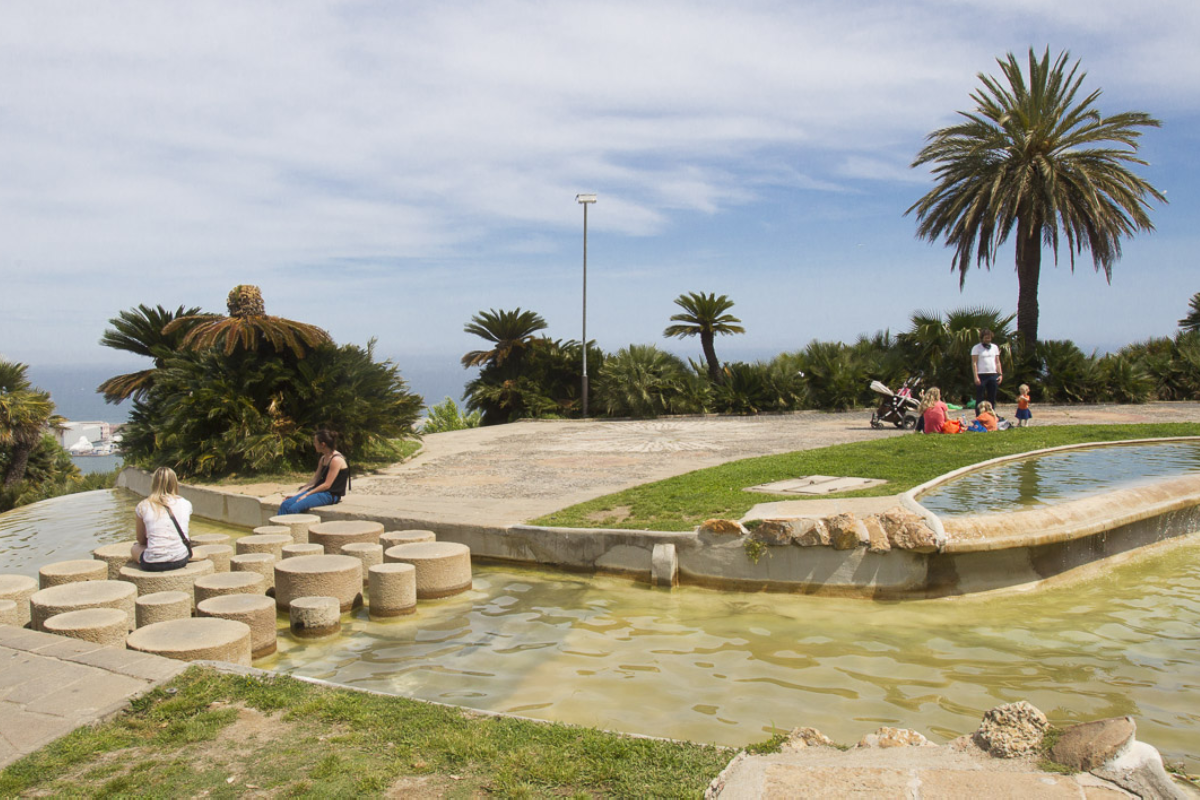
The Botanical Garden
Inaugurated in 1999, the Botanical Garden is part of a long tradition of specialized gardens set up for the study and preservation of the biodiversity of Mediterranean flora. The garden is home to dozens of native species and foreign varieties that over time have adapted to the temperate climate of the city. The ecological value of the garden lies in the fact that it brings together in one space most of the plants and trees that make up the Barcelona ecosystem.
The Botanical Garden is divided into different levels, with the steep slopes contributing to a highly attractive and visually powerful architectural design. The botanical representation of the Mediterranean climate is divided into eight “phyto-episodes” that enable visitors to discover the rich flora of Australia, Chile, South Africa, North Africa, California, the Eastern Mediterranean, the Iberian Peninsula, the Balearic Islands, and the Canary Islands.
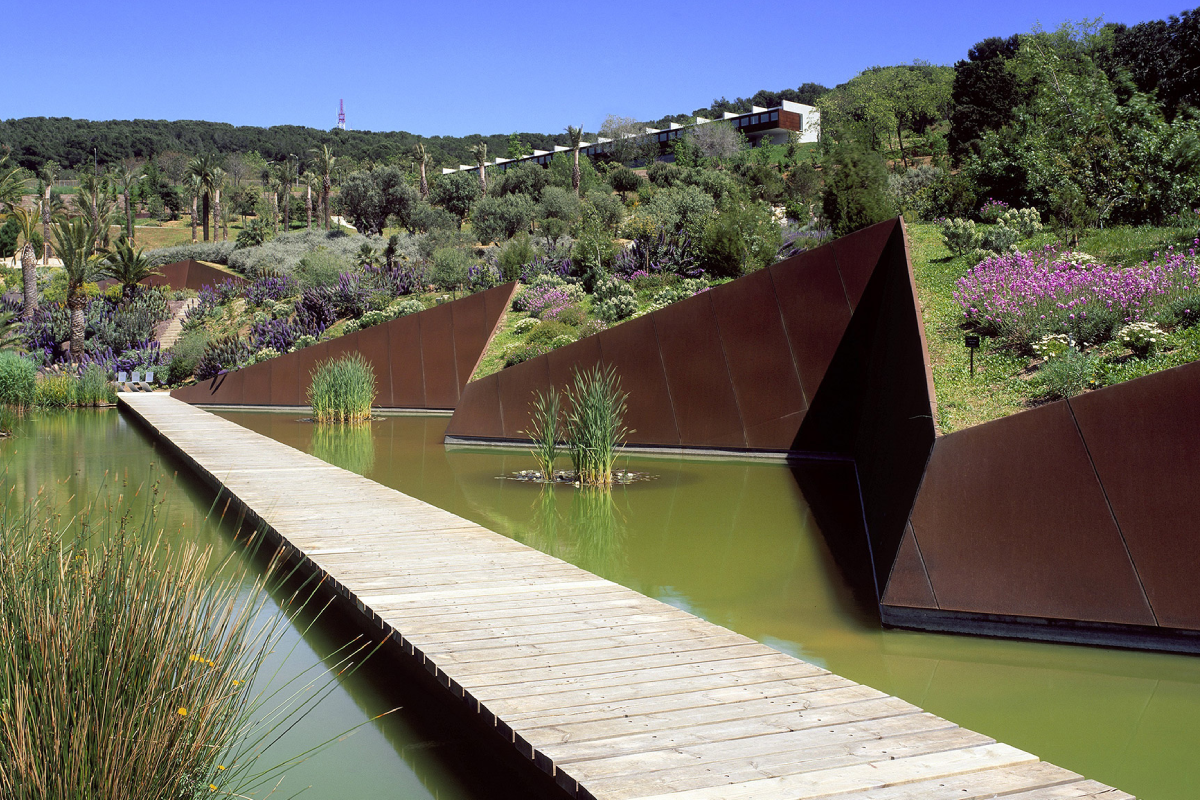
The Horta Labyrinth
This is perhaps the most fun and photogenic garden-park of all. The Horta Labyrinth Park is the oldest garden in Barcelona and stands out for the meticulous pruning of its hedges and its truly peaceful atmosphere. As its name suggests, it is a labyrinth made of thick cypress hedges which challenge and entrap visitors as time flows calmly on. In the center of the labyrinth is a majestic sculpture of Eros, the Greek god of love and fertility.
From the three terraces of the neoclassical pavilion at the top of the park one can observe the symmetrical right angles of the labyrinth. The terraces were designed by Domenico Bagutti to help family and friends find their way out of the maze and to walk alongside the romantic canal, which was originally navigable. The ordered garden dominated by man is complemented with a wilder, freer and more spontaneous approach to nature, revealing the contrast between the neoclassical origin of the garden, dating from 1794, and the intoxicating romanticism with which the construction was completed in 1853.
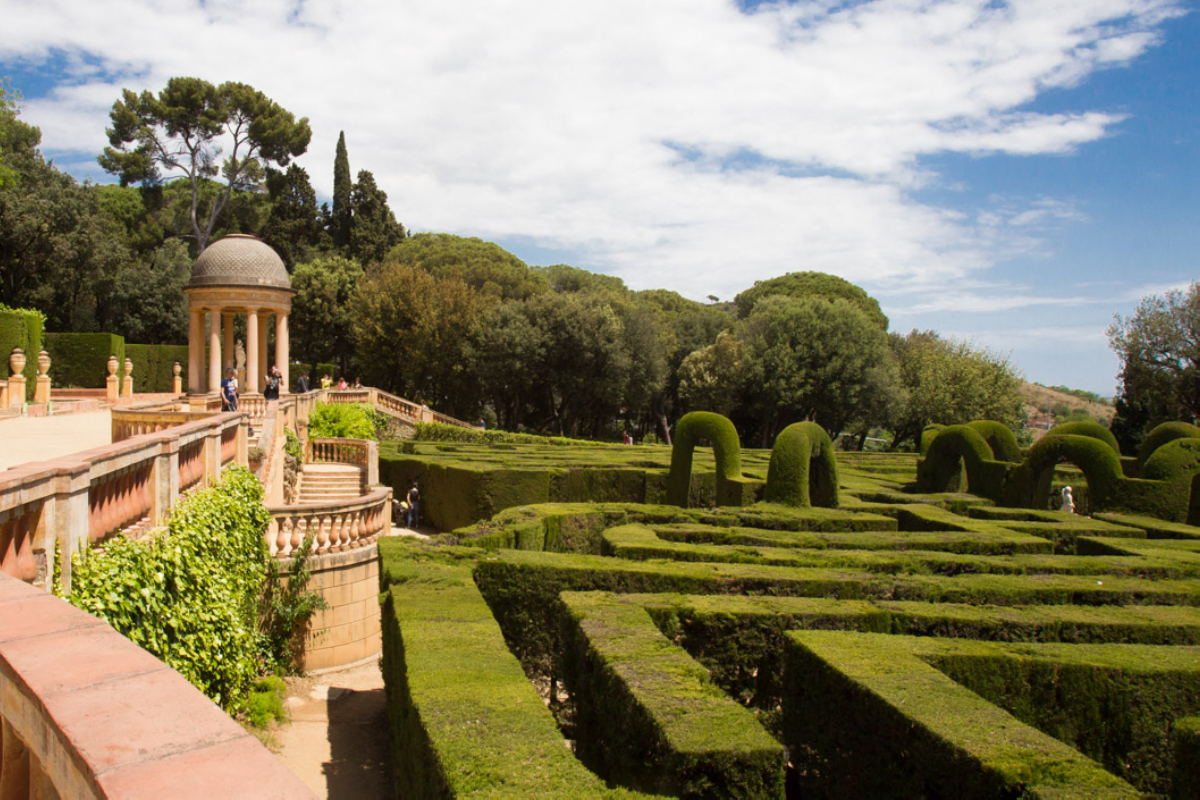
Mossèn Costa i Llobera Gardens
Located along a coastal strip squeezed between the city and the port, these gardens offer panoramic views and provide a fantastic place for a family outing or for anyone just curious to discover more of Montjuïc. Just a few minutes from the city center, the park resembles an open-air museum as it houses one of the most important collections of cacti and succulents in Europe.
In 1987, a New York Times journalist ranked the Mossèn Costa i Llobera Gardens amongst the Top Ten Best Gardens in the world. The three hectares of different gardens offer a mind-blowing journey through some of the most exotic desert, semi-desert, tropical, and high mountain species on the planet.
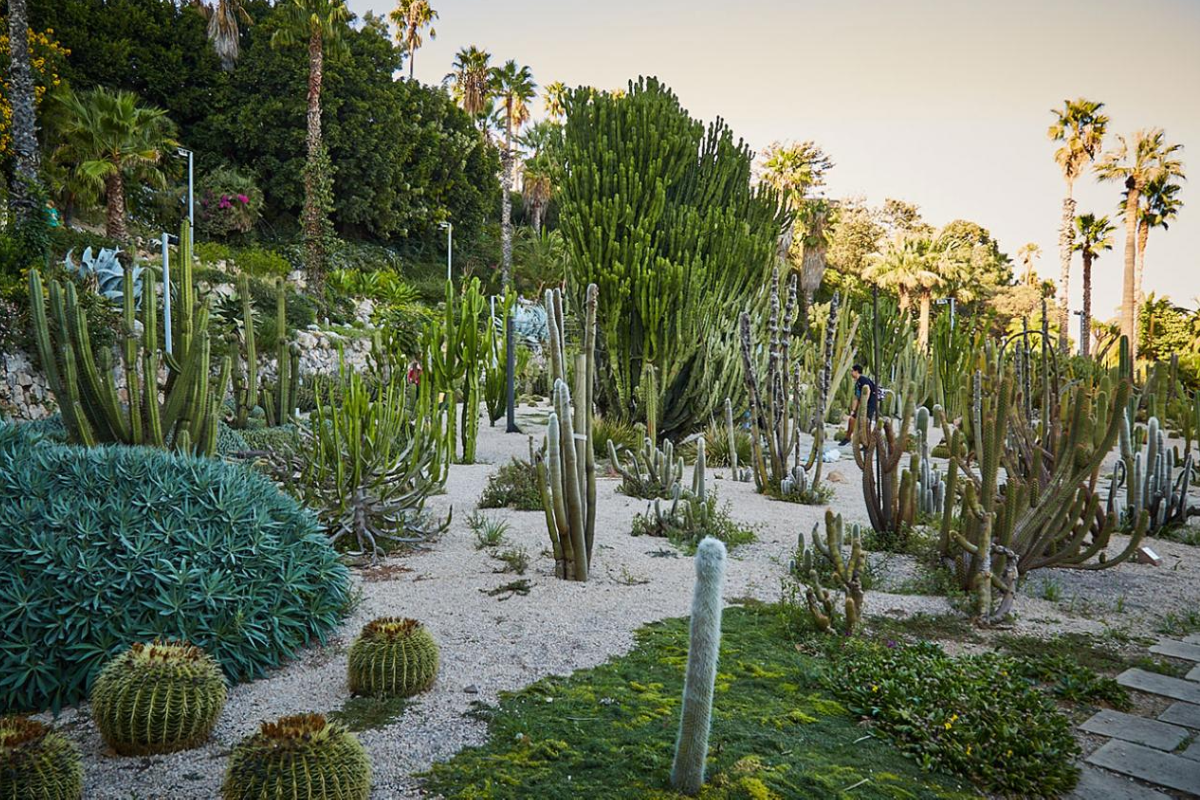
If you want to know the latest news about Barcelona, its talent and its projects, subscribe to our newsletter.







